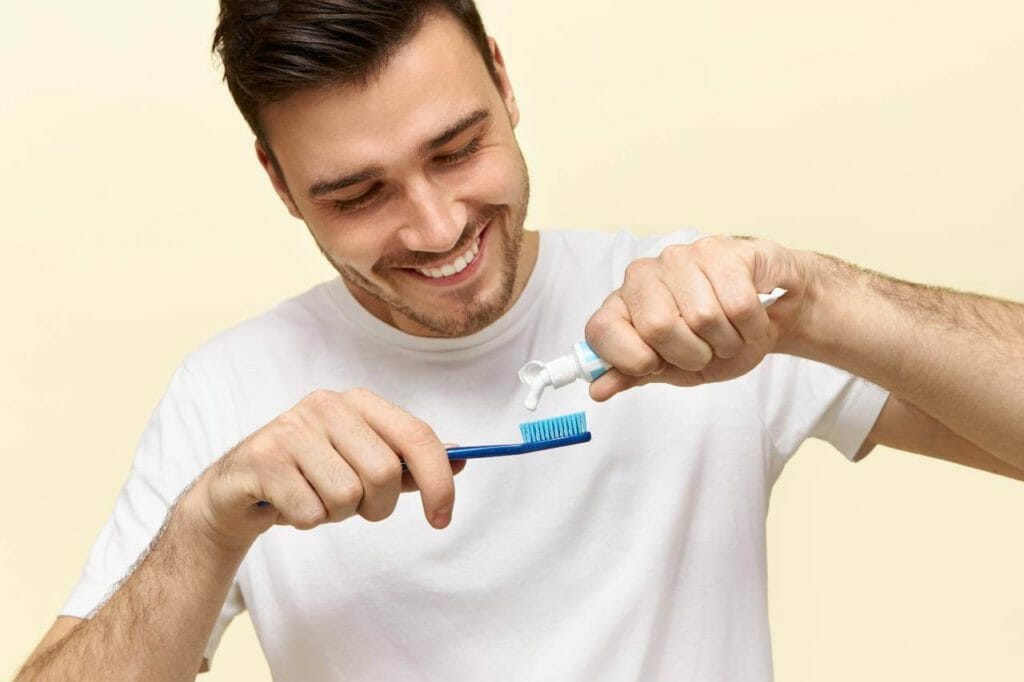
Dental fillings play a crucial role in restoring damaged teeth and maintaining oral health. However, there are various factors that can contribute to a filling becoming loose over time, leading to potential discomfort and complications. In this article, we will explore the common causes behind loose dental fillings and provide insights on how to prevent them. Understanding these causes can empower you to take proactive steps in caring for your teeth and ensuring the longevity of your dental restorations. Let’s delve into the fascinating world of dental health and the causes of loose dental fillings!
The causes of dental fillings becoming dislodged can vary, but common factors include tooth decay, poor oral hygiene, eating hard foods, tooth grinding, age and wear and tear, and accidents. When a filling becomes loose, it can cause discomfort or sensitivity, especially when chewing or biting down on food.
If a filling’s been in place for a while, cavities may develop around the site, causing discomfort and potential tooth damage. This is because fillings can weaken the tooth structure over time, making it more susceptible to decay.
You may also notice that your gums feel tender or swollen near the affected area. In some cases, you may even be able to see tiny holes or pits in the enamel of your teeth where decay has begun to form. If left untreated, these cavities can cause further damage to your teeth and potentially lead to infection or tooth loss.
You can easily prevent tooth decay and damage to your teeth by practicing good oral hygiene habits. This includes brushing twice a day and flossing regularly. Neglecting your oral hygiene can lead to various dental concerns, including loose fillings.
When you fail to brush and floss properly, bacteria in your mouth can build up and cause cavities. These cavities weaken the tooth structure, making it difficult for the filling material to stay in place. Moreover, poor oral hygiene practices make it easy for food particles to get stuck between teeth and around fillings.
When these particles accumulate over time, they create pressure on the filling material, gradually loosening it from its position. Therefore, if you have a loose filling or want to avoid getting one in the future, prioritize proper oral hygiene practices. Brush twice a day with fluoride toothpaste for at least two minutes each time, and use dental floss or interdental brushes daily to clean between teeth and around fillings.
Eating hard foods or chewing on objects can harm your dental fillings. When you bite down on something too hard or chew on an object that isn’t meant for consumption, it can cause damage to your filling. This damage can lead to a loose filling, which can cause discomfort and pain.
As you age, your dental fillings naturally experience wear and tear, which can lead to the need for repair or replacement. The constant pressure of chewing and grinding food over time can cause a filling to loosen and eventually fall out.
If you’ve had a filling for many years, it’s important to keep an eye out for warning signs that it may be becoming loose. One common sign of a loose filling is sensitivity when eating or drinking hot or cold foods. You may also notice pain when biting down on certain areas of your mouth. Another warning sign is if you feel something rough or jagged in your mouth – this could indicate that part of the filling has broken off.
Accidents or mishaps can come in many forms – from biting down on something too hard to experiencing a blow to the face during sports or other physical activities. If you experience any trauma to your mouth, it’s essential to immediately check for any loose fillings. Some warning signs may include sensitivity to the trauma area where you have a tooth filling, pain when biting down on certain foods, or even visible cracks in the filling itself.
To prevent future loose fillings, it is important to maintain good oral hygiene. Brush your teeth twice a day with a fluoride toothpaste, floss daily, and visit your dentist regularly for check-ups and cleanings. Avoid habits like teeth grinding or clenching, as they can put excessive pressure on the fillings. If you participate in sports or other activities that may pose a risk to your teeth, consider using a mouthguard for protection.

There are several signs that indicate a loose dental filling. You may experience sensitivity or pain when biting down or chewing, feel a slight movement or shifting of the filling, notice a gap or hole between the filling and the tooth, or even see a piece of the filling missing.
If you suspect that your dental filling is loose, it is important to contact your dentist as soon as possible. They will examine the tooth and determine the best course of action. In some cases, the filling may be able to be repaired or replaced, while in other cases, a dental crown or other restoration may be necessary.
It is always best to schedule an appointment with your dentist as soon as you notice a problem with your dental filling. Ignoring a loose filling can lead to further damage or decay of the tooth, increasing the risk of more extensive and costly dental treatment in the future.
It is best to avoid chewing on the side of the mouth where the filling is loose in order to prevent further damage. Stick to soft foods and avoid extremely hot or cold drinks. It is important to maintain good oral hygiene and continue brushing and flossing regularly.
While it may be tempting to try to fix a loose dental filling at home, it is not recommended. Home remedies can be ineffective and may even cause further damage to the tooth. It is best to leave the repair to a dental professional.
Yes, even with proper oral hygiene and regular dental care, dental fillings can still become loose over time. This is because the natural wear and tear on your teeth can eventually affect the filling, and other factors such as teeth grinding or biting down on hard objects can contribute to a filling becoming loose.
If you lose a dental filling, it is important to contact your dentist right away. They will determine the best course of action, which may involve replacing the filling or exploring other dental restoration options like a dental crown. In the meantime, avoid chewing on the affected tooth and maintain good oral hygiene.
Yes, a loose dental filling can cause a variety of dental issues. It can create a space for bacteria to enter and cause further decay or damage to the tooth. It can also impact your bite and lead to discomfort or pain when chewing. Furthermore, a loose filling can increase the risk of the filling completely falling out or causing damage to nearby teeth.

If you have a loose filling or a filling that came out, the most important step is to schedule an appointment with your dentist as soon as possible. If you are looking for a reliable and well-regarded dental office in the Fairview Allen area, don’t hesitate to get in touch with us to schedule your appointment. We also offer a wide range of dental care services to help assist you in attaining a smile that is both healthy and aesthetically pleasing.
If you’re in the Fairview Allen, TX area and have questions about this type of treatment option, you can reach us at our Fairview, TX dental office to schedule an appointment online or call us at 972-468-1440.
We firmly believe that the internet should be available and accessible to anyone, and are committed to providing a website that is accessible to the widest possible audience, regardless of circumstance and ability.
To fulfill this, we aim to adhere as strictly as possible to the World Wide Web Consortium’s (W3C) Web Content Accessibility Guidelines 2.1 (WCAG 2.1) at the AA level. These guidelines explain how to make web content accessible to people with a wide array of disabilities. Complying with those guidelines helps us ensure that the website is accessible to all people: blind people, people with motor impairments, visual impairment, cognitive disabilities, and more.
This website utilizes various technologies that are meant to make it as accessible as possible at all times. We utilize an accessibility interface that allows persons with specific disabilities to adjust the website’s UI (user interface) and design it to their personal needs.
Additionally, the website utilizes an AI-based application that runs in the background and optimizes its accessibility level constantly. This application remediates the website’s HTML, adapts Its functionality and behavior for screen-readers used by the blind users, and for keyboard functions used by individuals with motor impairments.
If you’ve found a malfunction or have ideas for improvement, we’ll be happy to hear from you. You can reach out to the website’s operators by using the following email
Our website implements the ARIA attributes (Accessible Rich Internet Applications) technique, alongside various different behavioral changes, to ensure blind users visiting with screen-readers are able to read, comprehend, and enjoy the website’s functions. As soon as a user with a screen-reader enters your site, they immediately receive a prompt to enter the Screen-Reader Profile so they can browse and operate your site effectively. Here’s how our website covers some of the most important screen-reader requirements, alongside console screenshots of code examples:
Screen-reader optimization: we run a background process that learns the website’s components from top to bottom, to ensure ongoing compliance even when updating the website. In this process, we provide screen-readers with meaningful data using the ARIA set of attributes. For example, we provide accurate form labels; descriptions for actionable icons (social media icons, search icons, cart icons, etc.); validation guidance for form inputs; element roles such as buttons, menus, modal dialogues (popups), and others. Additionally, the background process scans all of the website’s images and provides an accurate and meaningful image-object-recognition-based description as an ALT (alternate text) tag for images that are not described. It will also extract texts that are embedded within the image, using an OCR (optical character recognition) technology. To turn on screen-reader adjustments at any time, users need only to press the Alt+1 keyboard combination. Screen-reader users also get automatic announcements to turn the Screen-reader mode on as soon as they enter the website.
These adjustments are compatible with all popular screen readers, including JAWS and NVDA.
Keyboard navigation optimization: The background process also adjusts the website’s HTML, and adds various behaviors using JavaScript code to make the website operable by the keyboard. This includes the ability to navigate the website using the Tab and Shift+Tab keys, operate dropdowns with the arrow keys, close them with Esc, trigger buttons and links using the Enter key, navigate between radio and checkbox elements using the arrow keys, and fill them in with the Spacebar or Enter key.Additionally, keyboard users will find quick-navigation and content-skip menus, available at any time by clicking Alt+1, or as the first elements of the site while navigating with the keyboard. The background process also handles triggered popups by moving the keyboard focus towards them as soon as they appear, and not allow the focus drift outside of it.
Users can also use shortcuts such as “M” (menus), “H” (headings), “F” (forms), “B” (buttons), and “G” (graphics) to jump to specific elements.
We aim to support the widest array of browsers and assistive technologies as possible, so our users can choose the best fitting tools for them, with as few limitations as possible. Therefore, we have worked very hard to be able to support all major systems that comprise over 95% of the user market share including Google Chrome, Mozilla Firefox, Apple Safari, Opera and Microsoft Edge, JAWS and NVDA (screen readers), both for Windows and for MAC users.
Despite our very best efforts to allow anybody to adjust the website to their needs, there may still be pages or sections that are not fully accessible, are in the process of becoming accessible, or are lacking an adequate technological solution to make them accessible. Still, we are continually improving our accessibility, adding, updating and improving its options and features, and developing and adopting new technologies. All this is meant to reach the optimal level of accessibility, following technological advancements. For any assistance, please reach out to